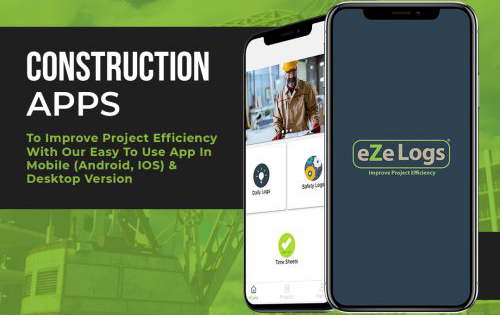When public infrastructure teams oversee multi-decade capital programs—tunnels, wastewater treatment upgrades, grid modernization—data volume scales with complexity. Across project lifecycles, everything from survey reports, drone imagery, BIM files, change order documentation, inspection photos, permit records, risk logs, and scheduling baselines accumulates into terabytes of information.
For some agencies, it’s not theoretical. It’s 28 terabytes of live, compliance-bound, project-critical records. And when that data underpins contract enforcement, federal audit compliance, stakeholder reporting, and real-time field coordination, it must be protected against more than corruption. It must survive failure.

Disaster recovery planning for public infrastructure organizations cannot resemble traditional enterprise DR playbooks. These agencies must plan not only for system uptime, but for data integrity across dispersed offices, consultants, and contractors. Data loss in this domain isn’t just about technical inconvenience—it means schedule setbacks, missed obligations, or noncompliance with federal oversight.
28TB Isn’t Static. It’s in Motion.
Public infrastructure program data is dynamic, with daily activities such as mobile punch list submissions, as-built uploads, and field inspection photos potentially adding 30GB or more. Engineering firms frequently update CAD references or submit value engineering alternatives, while construction managers annotate PDFs and generate live schedule snapshots for reporting.
Effective disaster recovery must accommodate both real-time changes and long-term record immutability. Granular versioning is essential, enabling restoration of specific folder states at given times, including metadata, permissions, and audit trails.
Redundancy Must Mirror the Risk Profile
Infrastructure organizations often manage projects across regions prone to seismic activity, floods, or coastal storms. Ironically, their IT systems are sometimes located within these same vulnerable areas. Therefore, disaster recovery strategies should incorporate geographic failover, replicating data across distinct regions to mitigate localized risks.
Additionally, data sovereignty is a critical consideration. Public agencies may be required by state or federal policies to retain sensitive data within national borders. Cloud vendors utilized for disaster recovery must comply with relevant regulations, such as FedRAMP or local data residency statutes.
Contractual and Regulatory Exposure Drives the Recovery Timeline
Agencies involved with projects funded by entities like the FTA, FAA, EPA, or FEMA face audit exposures that can extend 5–10 years post-completion. Consequently, disaster recovery systems must preserve data for retention periods that surpass the active phase of projects.
For ongoing projects, Recovery Time Objective (RTO) and Recovery Point Objective (RPO) targets should be engineered for immediacy. Losing even 12 hours of capital program data could compromise schedule reconciliation or lead to duplicative submittals. Some agencies stipulate an RTO of 4 hours and an RPO of 1 hour, necessitating continuous replication and failover capabilities that encompass files and associated business logic.
Platform Design Must Isolate System Recovery from Data Recovery
In many construction management systems, recovery focuses on restoring virtual machines or application environments. However, in public infrastructure contexts, the data layer often holds greater significance. A functional application is ineffective if project records are outdated or incomplete.
Effective disaster recovery plans should isolate infrastructure recovery (servers, services) from application recovery (form logic, permission structures) and from the data layer (project artifacts, metadata, logs). Each layer must be restorable independently and in combinations to address various disaster scenarios.
Immutable Audit Logs Must Be Part of the DR Strategy
Omitting audit trail recovery from disaster recovery plans can expose agencies to compliance gaps. Public infrastructure programs are accountable not just for outcomes but also for processes. Preserving immutable logs separately and redundantly ensures the ability to verify data integrity post-recovery.
Implementing tamper-proof, write-once storage solutions for audit logs is recommended. In disaster recovery situations, these logs serve as evidence that restored data remains unaltered, maintaining compliance and trustworthiness.
Contractor Collaboration Adds Complexity
Project data is often generated by contractors, consultants, and external agencies, necessitating disaster recovery systems that account for federated data contributions. It’s insufficient to back up only internal agency files; platforms must also preserve data uploaded via field apps, contractor portals, or third-party integrations.
This includes snapshotting collaborative workspaces, shared folders, mobile photo uploads, tagged comment threads, and transmittal records. Moreover, disaster recovery procedures must restore permissions and accessibility for all participating roles, not just internal staff.
Disaster Recovery as a Living Test Protocol
While many public agencies have documented disaster recovery policies, active testing practices are often lacking. Regular simulations, such as quarterly tests, should be standard. For instance, randomly retrieving a file from cold storage and validating its completeness and metadata consistency ensures readiness.
Testing should also occur during high-volume cycles to assess the recovery process’s effectiveness without disrupting live operations. Ultimately, disaster recovery is an ongoing operational mandate, especially for public infrastructure organizations managing extensive project data.
Also Read:
Safety First: Enhancing Toolbox Talks with AI-Powered Safety Management in Ezelogs
Smart HR for Construction: Boosting Payroll Efficiency with Ezelogs’ AI-Enabled HRM Tools
Compliance Made Easy: How AI-Enabled Certified Payroll in Ezelogs Simplifies Regulatory Reporting
Centralizing Your Data: The Power of Ezelogs’ Product Data Sheet Library for Faster Submittals
Voice-Activated Efficiency: Transforming Construction Management with Ezelogs’


